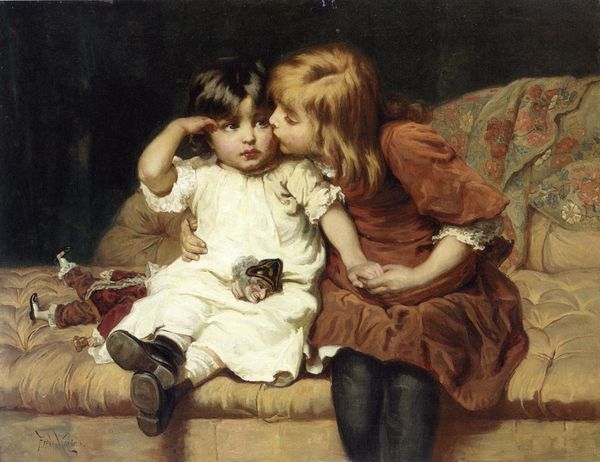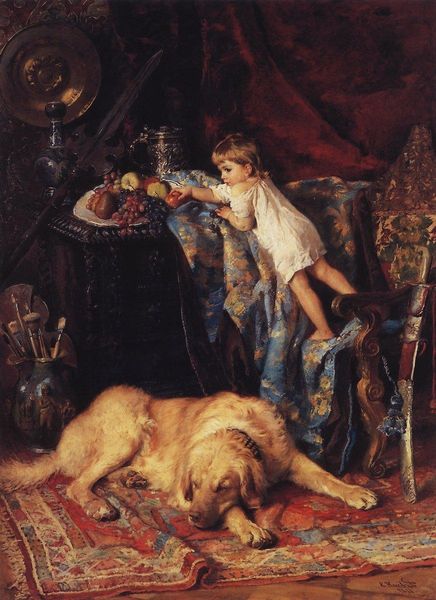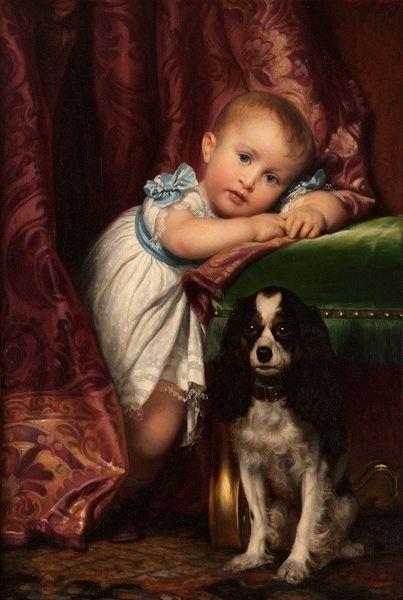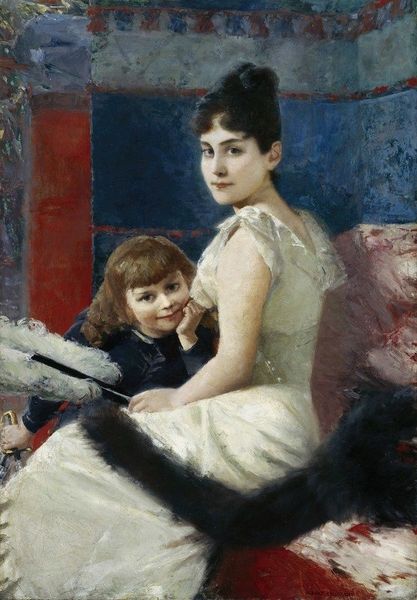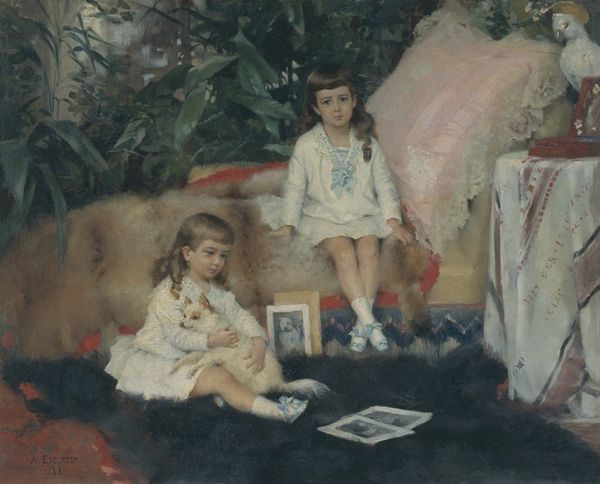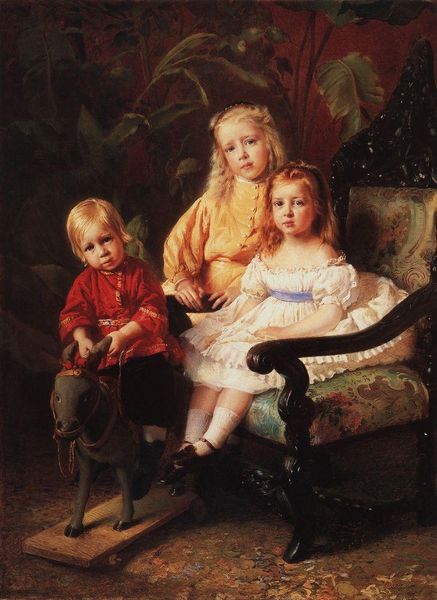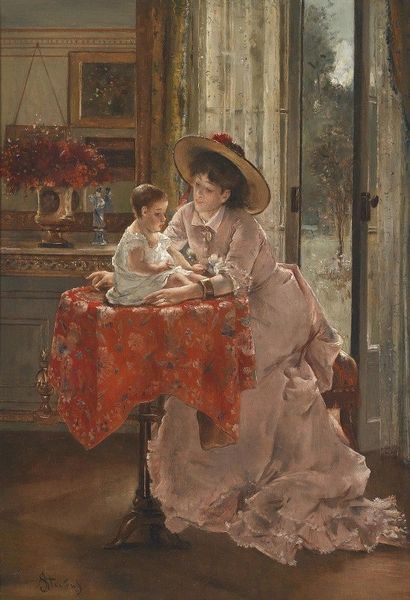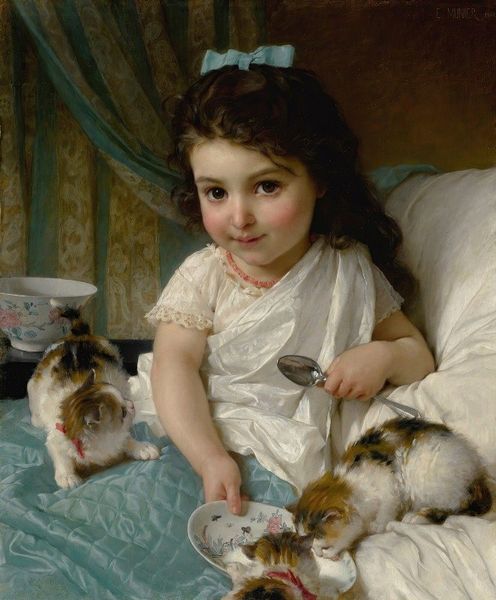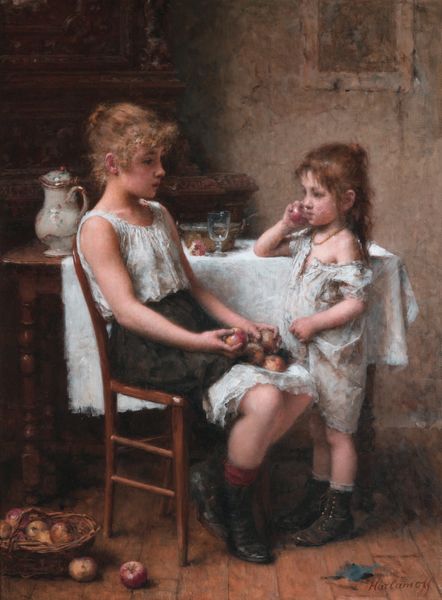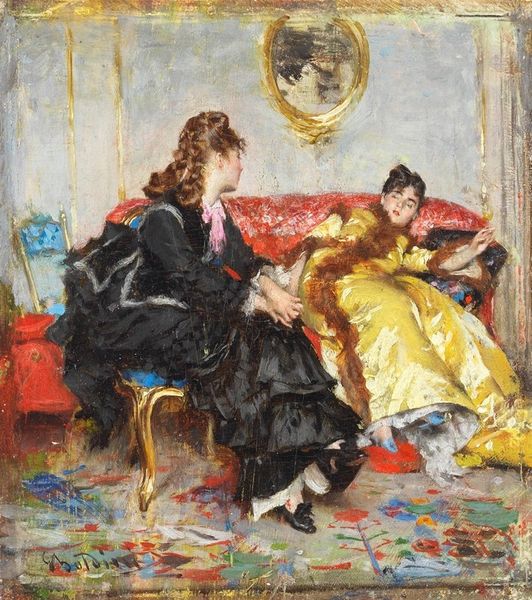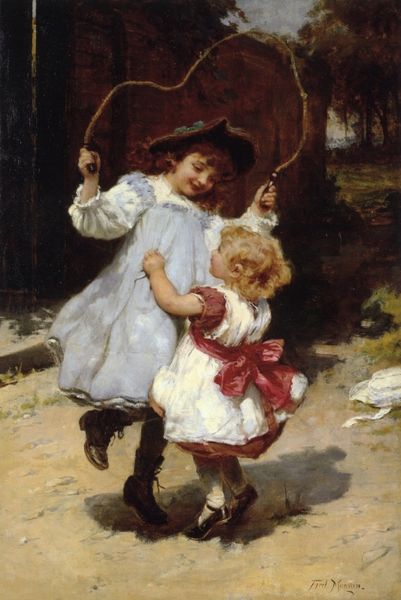
Copyright: Public Domain: Artvee
Editor: Here we have Albert Edelfelt’s "Michael and Xenia, Children of the Emperor Alexander III," painted in 1882. It strikes me as a very intimate and staged portrait. What kind of narrative do you see being presented? Curator: That's an astute observation. I see it as more than just a portrait. It’s a visual statement about power, privilege, and the constructed image of the Romanov dynasty during a period of intense social and political upheaval. The children are not presented as individuals, but as symbols. The luxurious setting, the clothing – it all reinforces their elite status, distancing them from the realities faced by most of the Russian population. Does this staging feel exclusionary to you? Editor: Absolutely. It emphasizes a divide. There's a clear power dynamic being displayed, not only in their social position but how Edelfelt frames the children in this lavish interior. I wonder how their representation contributed to a specific agenda? Curator: Precisely. Consider the rise of revolutionary movements during this time. Images like this were strategically deployed to reinforce the legitimacy and benevolence of the imperial family, promoting an idea of inherent right and divine order amidst growing unrest and calls for reform. It almost functions as propaganda. What aspects of the visual language do you feel contribute to this “propaganda”? Editor: The dog seems to further add to the staged element as if everyone involved—the artist, the sitters and even the dog, knows they're putting on a performance. The interior is also opulent yet cold. I can see how it creates a statement of authority but also feels very isolating at the same time. Curator: Right. The seemingly innocent portrayal carries a heavy ideological weight when viewed within its socio-political context. It reveals the ways in which art can serve to both reflect and construct narratives of power. Editor: I see that now, the painting is not just aesthetically pleasing; it actively participates in upholding existing social structures, maybe more deliberately than I initially thought. Curator: Exactly. It reminds us to question what is represented and whose interests it serves, highlighting how art history intertwines with cultural politics.
Comments
No comments
Be the first to comment and join the conversation on the ultimate creative platform.
